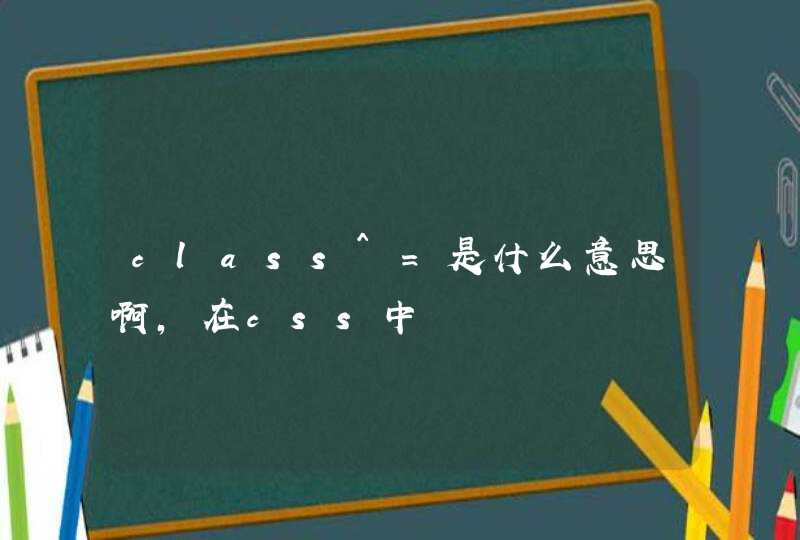
做金融类型的应用经常会用到数据的统计报表 诸如折线图 , K线图, 饼状图,柱状图 既能形象的表述数据的分布 , 同时又增加了数据的可读性
实现思路: 百度Echarts支持安卓移动端的运用 , WebView加载html, 嵌套JavaScript代码 , 即可动态实现在线图表的展示功能..
下面展示下今天要实现的效果
进入Echarts官网下载页 可以选择自己需要的图表类型 自定义下载js文件 , 精简版,常用版, 完整版 根据需求自定义下载
导入刚下载的图表构建工具 echarts.min.js 到安卓项目的 资产目录(assets)下 这里我使用的 完整版
创建 Htm l文件 , 即要展示的网页 , 文件名自定义 这里我是 myechart.html
我的assets目录结构如下:
接下来就是html文件的代码了 首先我们为ECharts准备一个具备大小(宽高) 的 DOM 并取别名
<div id="main" style="float: leftwidth: 600pxheight:500pxmargin-top: 20px"></div>
导入图表构建工具
<script src="js/echarts.min.js"></script>
因为我这里要展示多种类型的图表 所以定义了几个方法 下面以折线图为例
var lineJson//用于临时存储折线图json对象, 便于追加数据
//创建折线图
function createLineChart(obj){
lineJson=obj
options = {
title : {
//text: '脉搏值(次/min)',
text: obj.title,
subtext: 'make by sxt',
x:'left'
},
tooltip: {
trigger: 'axis',
formatter: "脉搏频率 : <br/>{b} - {c} 次/min"
},
xAxis: {
id: 'dataX',
type: 'category',
splitLine:{
show:true
},
axisLabel: {
//formatter: '{value} °C'
formatter: '{value}'
},
data: obj.times //动态展示运动时间
},
yAxis: {
type: 'value',
axisLine: {onZero: true},
splitLine:{
show:true
},
axisLabel: {
//formatter: '{value} km'
formatter: '{value}'
},
min:0,
max:150//在此设置范围
},
dataZoom: [
{
id:'dataZoom',
show:false,
type: 'inside',//inside 为拖动效果
//type: 'slider',//slider为手动更新效果
realtime: true,
filterMode: 'filter',
start: 20,
end: 85,
xAxisIndex: 0
}
],
series: [{
id: 'dataY',
name: '脉搏频率(次)/(s)',
type: 'line',
smooth: true,
data: obj.steps, //动态展示运动步数数据
lineStyle: {
normal: {
width: 3,
shadowColor: 'rgba(0,0,0,0.4)',
shadowBlur: 10,
shadowOffsetY: 10
}
},
markPoint : {//标注点
data : [//这种方式内部自动计算最值
{
type :'max' ,
name:'最大值' ,
symbol:'image://' + treeUrl,
symbolSize: [30, 30]
},
{
type : 'min',
name: '最小值',
symbol:'image://' + childUrl,
symbolSize: [30, 30]
}
]
},
markLine : {
data : [ {type : 'average', name: '平均值'} ]
}
}]
}
}
//更新折线图的缩放起始位置
function updateZoomState(start,end){
myChart.setOption({
dataZoom: [{
id: 'dataZoom',
start: start,
end: end
}]
})
}
//获取数组最小值
function getMinValue(obj){
var min = obj.steps[0]
for (var i = 1i <obj.steps.lengthi++){
if (obj.steps[i] <min){
min = obj.steps[i]
}
}
return min
}
//获取数组最大值
function getMaxValue(obj){
var max = obj.steps[0]
for (var i = 1i <obj.steps.lengthi++){
if (obj.steps[i] >max) {
max = obj.steps[i]
}
}
return max
}
//更新折线图数据 继续在后面追加数据
function updateDataXY(dataX,dataY){
myChart.setOption({
xAxis: {
id: 'dataX',
data:lineJson.times.concat(dataX)
},
series:[{
id: 'dataY',
data:lineJson.steps.concat(dataY)
}],
dataZoom: [{
id: 'dataZoom',
start: 60,
end: 100
}]
})
}
展示图表
//显示图表
function createChart(type,json){
if(type=='line'){
createLineChart(json)
}
if(type=='bar'){
createBarChart(json)
}
if(type=='pie'){
createPieChart(json)
}
if(type=='more'){
createMoreChart()
}
// 基于准备好的dom,初始化echarts实例
myChart = echarts.init(document.getElementById('main'))
//使用指定的配置项和数据显示图表。
myChart.setOption(options)
}
D3是目前最流行的JavaScript可视化图表库之一,D3的图表类型非常丰富,并且支持SVG格式,因此应用十分广泛,也有很多图表插件基于D3开发,比如MetricsGraphics.js,在D3上构建的数据图表非常强大。
D3的特点
允许绑定任意数据到DOM,将数据驱动转换应用到Document中。
不仅可以创建精美的HTML表格,而且可以绘制折线图、柱形图和饼图等数据图表。
支持SVG,在Web页面上渲染毫无压力。
回到顶部
D3的使用方法
关于D3的具体用法,可以看D3图形库API参考这篇文章。本文主要对介绍一些经典图表的实现效果及代码。
index.html代码:
<!DOCTYPE html>
<meta charset="utf-8">
<style>
svg {
font: 10px sans-serif
}
.y.axis path {
display: none
}
.y.axis line {
stroke: #fff
stroke-opacity: .2
shape-rendering: crispEdges
}
.y.axis .zero line {
stroke: #000
stroke-opacity: 1
}
.title {
font: 300 78px Helvetica Neue
fill: #666
}
.birthyear,
.age {
text-anchor: middle
}
.birthyear {
fill: #fff
}
rect {
fill-opacity: .6
fill: #e377c2
}
rect:first-child {
fill: #1f77b4
}
</style>
<body>
<script src="http://d3js.org/d3.v3.min.js"></script>
<script>
var margin = {top: 20, right: 40, bottom: 30, left: 20},
width = 960 - margin.left - margin.right,
height = 500 - margin.top - margin.bottom,
barWidth = Math.floor(width / 19) - 1
var x = d3.scale.linear()
.range([barWidth / 2, width - barWidth / 2])
var y = d3.scale.linear()
.range([height, 0])
var yAxis = d3.svg.axis()
.scale(y)
.orient("right")
.tickSize(-width)
.tickFormat(function(d) { return Math.round(d / 1e6) + "M" })
// An SVG element with a bottom-right origin.
var svg = d3.select("body").append("svg")
.attr("width", width + margin.left + margin.right)
.attr("height", height + margin.top + margin.bottom)
.append("g")
.attr("transform", "translate(" + margin.left + "," + margin.top + ")")
// A sliding container to hold the bars by birthyear.
var birthyears = svg.append("g")
.attr("class", "birthyears")
// A label for the current year.
var title = svg.append("text")
.attr("class", "title")
.attr("dy", ".71em")
.text(2000)
d3.csv("population.csv", function(error, data) {
// Convert strings to numbers.
data.forEach(function(d) {
d.people = +d.people
d.year = +d.year
d.age = +d.age
})
// Compute the extent of the data set in age and years.
var age1 = d3.max(data, function(d) { return d.age }),
year0 = d3.min(data, function(d) { return d.year }),
year1 = d3.max(data, function(d) { return d.year }),
year = year1
// Update the scale domains.
x.domain([year1 - age1, year1])
y.domain([0, d3.max(data, function(d) { return d.people })])
// Produce a map from year and birthyear to [male, female].
data = d3.nest()
.key(function(d) { return d.year })
.key(function(d) { return d.year - d.age })
.rollup(function(v) { return v.map(function(d) { return d.people }) })
.map(data)
// Add an axis to show the population values.
svg.append("g")
.attr("class", "y axis")
.attr("transform", "translate(" + width + ",0)")
.call(yAxis)
.selectAll("g")
.filter(function(value) { return !value })
.classed("zero", true)
// Add labeled rects for each birthyear (so that no enter or exit is required).
var birthyear = birthyears.selectAll(".birthyear")
.data(d3.range(year0 - age1, year1 + 1, 5))
.enter().append("g")
.attr("class", "birthyear")
.attr("transform", function(birthyear) { return "translate(" + x(birthyear) + ",0)" })
birthyear.selectAll("rect")
.data(function(birthyear) { return data[year][birthyear] || [0, 0] })
.enter().append("rect")
.attr("x", -barWidth / 2)
.attr("width", barWidth)
.attr("y", y)
.attr("height", function(value) { return height - y(value) })
// Add labels to show birthyear.
birthyear.append("text")
.attr("y", height - 4)
.text(function(birthyear) { return birthyear })
// Add labels to show age (separate not animated).
svg.selectAll(".age")
.data(d3.range(0, age1 + 1, 5))
.enter().append("text")
.attr("class", "age")
.attr("x", function(age) { return x(year - age) })
.attr("y", height + 4)
.attr("dy", ".71em")
.text(function(age) { return age })
// Allow the arrow keys to change the displayed year.
window.focus()
d3.select(window).on("keydown", function() {
switch (d3.event.keyCode) {
case 37: year = Math.max(year0, year - 10) break
case 39: year = Math.min(year1, year + 10) break
}
update()
})
function update() {
if (!(year in data)) return
title.text(year)
birthyears.transition()
.duration(750)
.attr("transform", "translate(" + (x(year1) - x(year)) + ",0)")
birthyear.selectAll("rect")
.data(function(birthyear) { return data[year][birthyear] || [0, 0] })
.transition()
.duration(750)
.attr("y", y)
.attr("height", function(value) { return height - y(value) })
}
})





































































